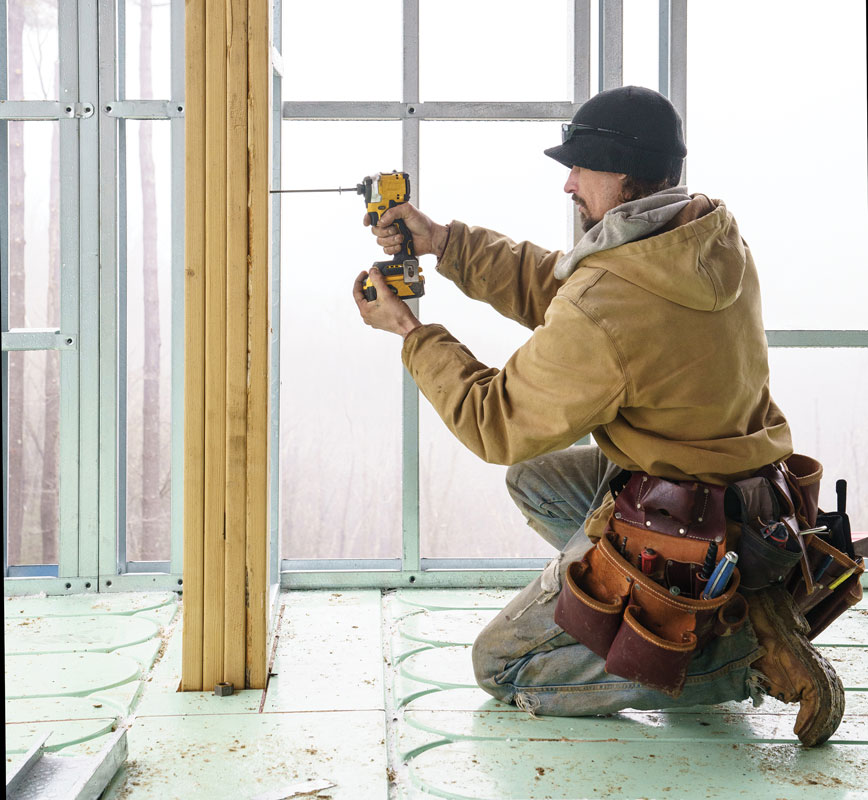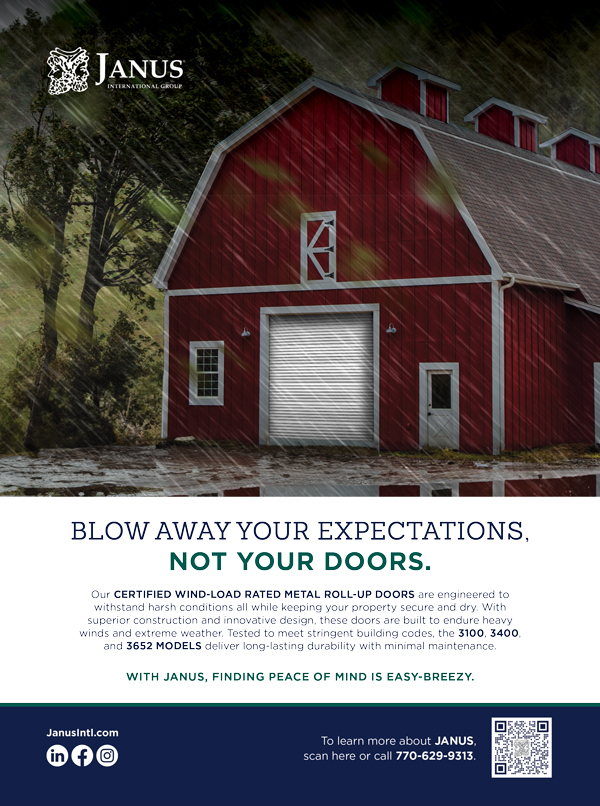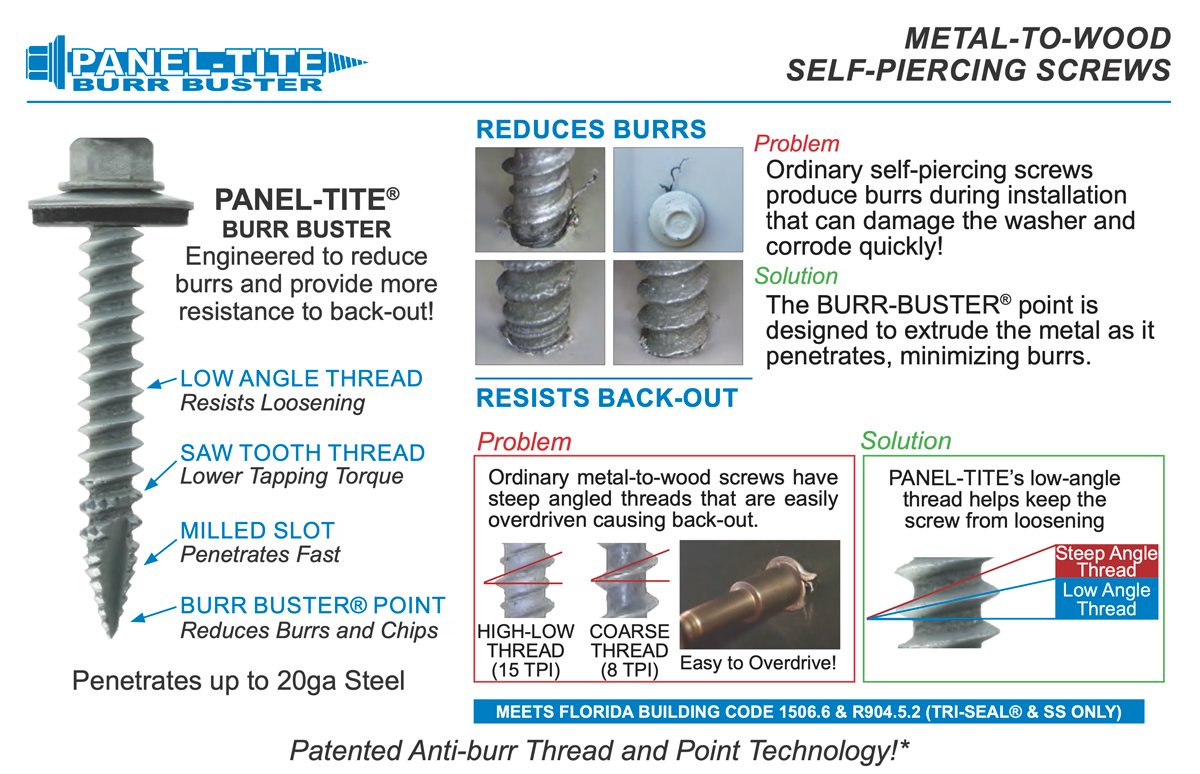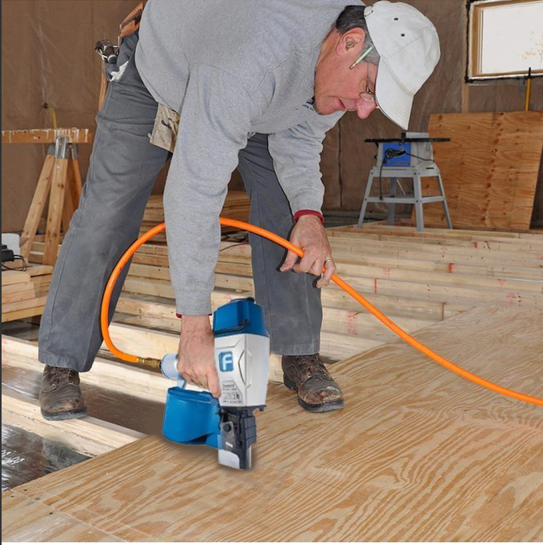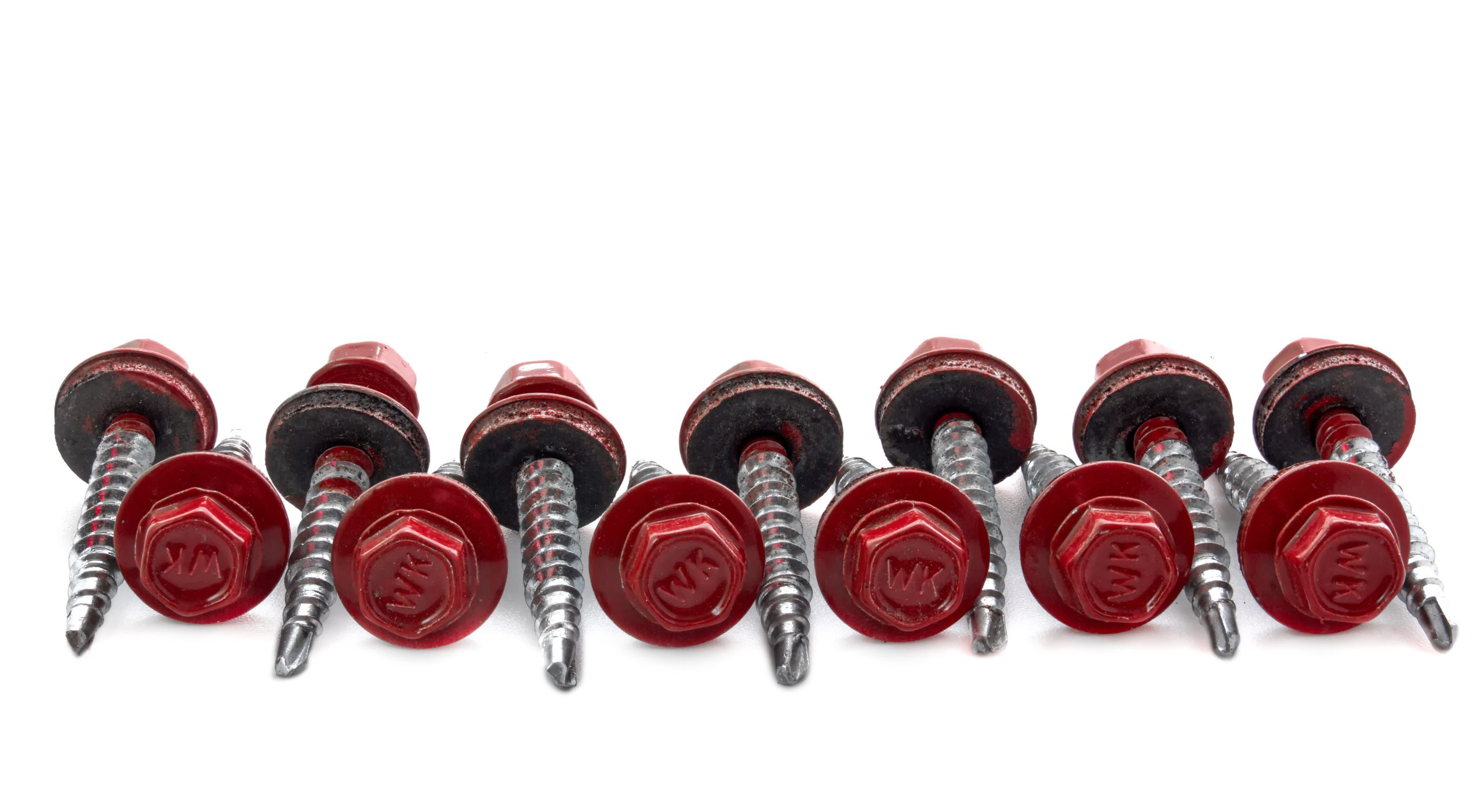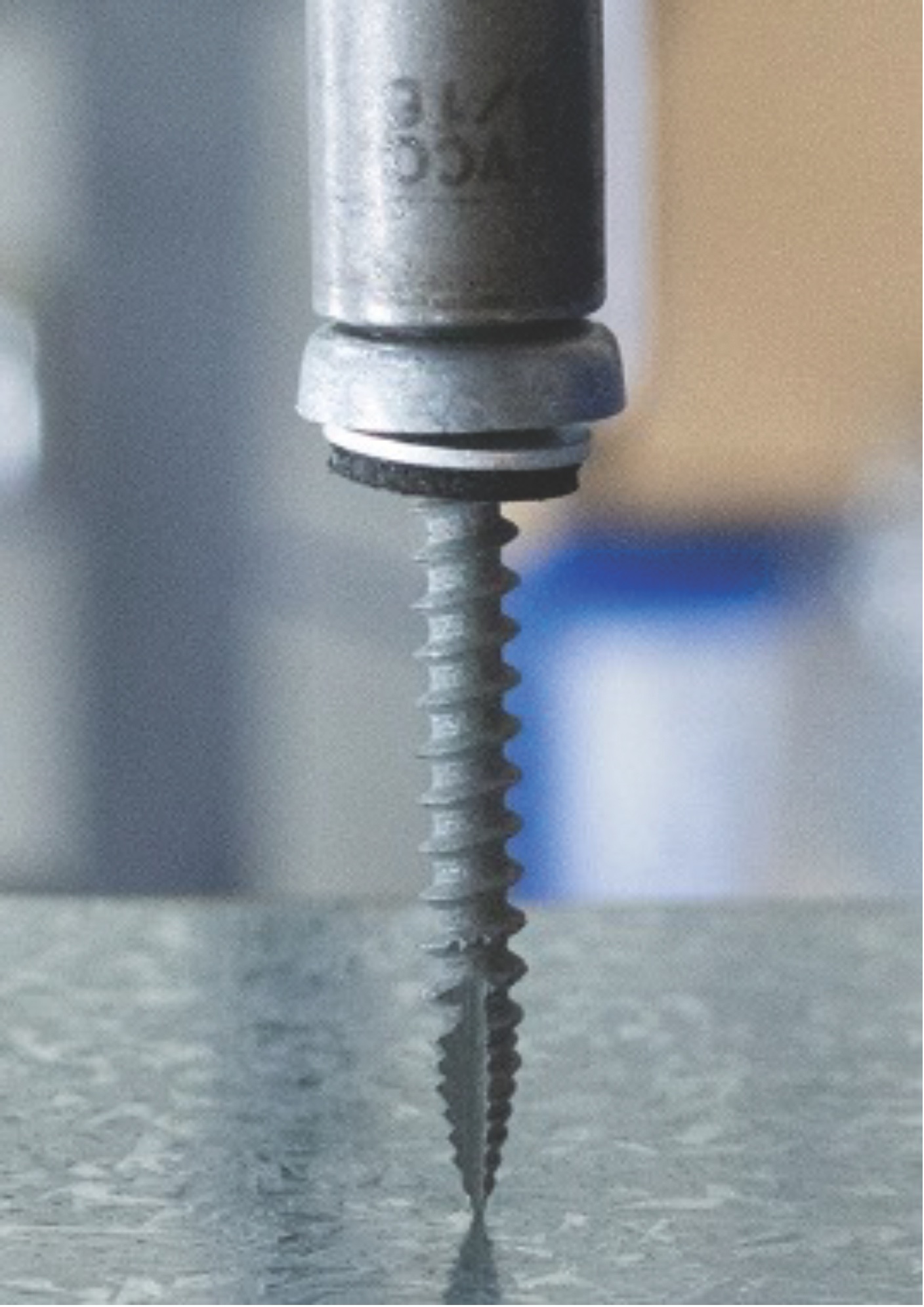By Mark Robins
In the context of construction, the term “structural” generally refers to components of a building or structure that are responsible for supporting loads and maintaining the overall stability of the structure.
When it comes to structural fasteners, then, it makes sense that they are an upgraded type of fastener that holds together those structural components. If you were explaining it to a sixth grader, you might say the word structural means “this piece or part needs to be super-strong and long-lasting because it really matters a lot, because it’s carrying weight.”
So for the purpose of this article, a structural fastener is a fastener designed to securely join or connect structural elements within a construction or engineering context. These fasteners play a crucial role in maintaining the integrity and stability of structures by providing a strong and reliable connection between components.
“Basically, this is an engineered product that has undergone testing and has well-defined structural properties,” said Sean Shields of the Structural Building Components Association. “For instance, how well do they hold if the members are being pulled apart, or rubbing perpendicular to each other?”
Who does the testing? Accredited, third-party agencies will produce the Technical Evaluation documentation. All of the brands featured in this article provided documentation. For instance, SPAX PowerLags have been independently tested by Dr J Engineering and ICC-ES, while GRK gave us documentation from ICC-ES.
What Makes Them Different
Here are some key characteristics that differentiate structural fasteners from other types of fasteners:
1. Load-Bearing Capacity: Structural fasteners are specifically designed to bear heavy loads and resist forces such as tension, compression, and shear. These fasteners are engineered to provide a robust connection that can withstand the stresses associated with the structural situation.
2. Precision Engineering: Structural fasteners undergo precise engineering and manufacturing processes to meet strict industry standards. This ensures that they have the necessary strength and durability for use in critical structural applications.
3. Material Selection: Structural fasteners are typically made from high-strength materials, such as alloy steel or stainless steel, to enhance their load-bearing capabilities. The choice of material is crucial to ensure resistance to corrosion, fatigue, and other environmental factors.
4. Tight Tolerances: The manufacturing of structural fasteners involves tight tolerances to ensure accurate and consistent dimensions. This precision is essential for proper fitting and alignment of structural components.
5. Testing and Certification: Structural fasteners undergo testing to verify their performance under various conditions.
Common types of fasteners that can be upgraded to be called “structural fasteners” include bolts, nuts, screws, washers, and rivets (and as we’ll learn later, nails). These upgraded fasteners may have specific features such as high-strength threads, larger diameters, or unique head designs to accommodate the demands of structural applications.
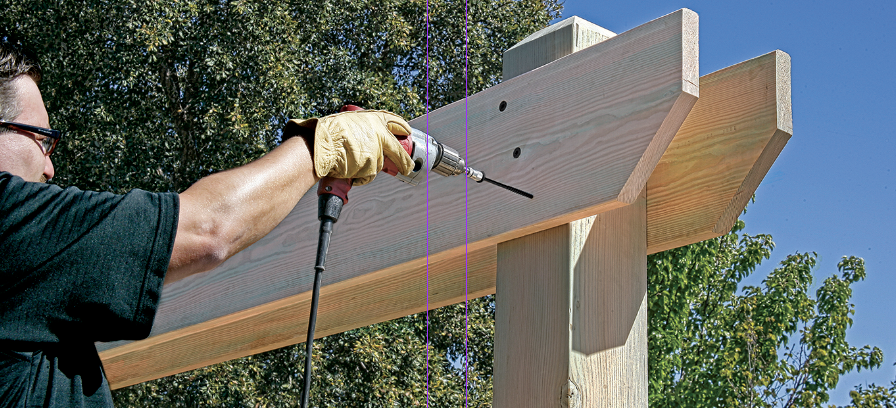
The SDWS Timber screw is a structural fastener that is engineered for wood-to-wood. As you’d expect, Simpson Strong-Tie can produce the proof: “Code listed in IAPMO UES ER-192 and meets 2018 and 2021 IRC and IBC code requirements for most common wood framing applications.” Simpson’s website has an entire section devoted to its products’ code documentation.
When Are Structural Fasteners Needed
Big steel buildings and bridges, and similar big projects, will always use structural fasteners. But other areas of construction utilizing wood or cold-formed steel will use them, too. For instance, structural fasteners are commonly used in post-frame construction and other types of construction that heavily involve wood.
While the primary structural connections in wood construction often rely on nails and screws, there are instances where more heavy-duty fasteners, such as bolts and specialty connectors, are used for critical connections. Structural fasteners play a role in connecting horizontal beams, trusses, purlins, and other framing elements. The use of appropriate fasteners is crucial to ensure the stability and integrity of the structure, and many of those scenarios are heavy duty in nature.
And structural fasteners are commonly used in rural buildings, including barns and sheds. These fasteners play a crucial role in connecting various structural components to ensure stability, durability, and overall structural integrity.
Worth the Expense
Brett Katsma is Product Manager for SPAX® Engineered Fasteners, a brand of Altenloh, Brinck & Co US, Inc. He said that yes, structural fasteners cost more, but by the time you add up the labor costs and also the quantities of fasteners needed, they wind up costing less. “Structural fasteners are generally sold at a slight premium to traditional lag screws, but when you factor in the cost of labor and avoided complications, structural fasteners cost less,” he said.
The growth of SPAX PowerLags, which are code-recognized structural wood-to-wood screws for framing, is proof. “The growth of the structural screw category is a good indication that customers believe the slight price difference is more than offset by the convenience and ease of use compared to traditional lag screws or having to hand-drive large spikes,” Katsma said.
“They require no pre-drilling, and drive faster than conventional lags and other structural lag screws.”
Basically, it’s a simple “time is money” situation, and Katsma said most projects call for more than a handful of lags, so the time savings can really add up. “Reducing the time needed to secure heavy framing members in place is a simple but welcomed relief, especially when setting from a ladder or higher elevations,” Katsma said.
Scott Park, Director, Fastening Systems Simpson Strong-Tie, agreed that the growth in the category proves that builders understand how time is money.
“Structural fastening continues to grow each year. Today contractors want a strong, secure connection but they are also looking for fast and easy installation,” he said.
Simpson cited the Strong-Drive SDWS Timber screw (see picture) as an example. It provides an alternative to through-bolting and traditional lag screws. “ When you have a product that helps the contractor, they keep coming back for that,” Park said. “Considering that the industry is still feeling the pinch of the labor shortage, supplying new and innovative systems that allow them to work faster and safer is a goal of ours.”
“Structural fasteners do cost more than standard fasteners because of their enhanced strength and durability,” said Robert Cominos, President/CEO of Albany County Fasteners, a distributor for several manufacturers. “The extra cost is justified for critical structural connections. Structural fasteners prevent joint slippage or failure. They should be used whenever structural integrity is a priority per code requirements or engineering specifications.”
Chad Giese, National Product and Sales Manager for BECK America, said costs are hard to determine because in the long run you should consider things like warranty claims, besides the more-obvious benefits of decreased install times.
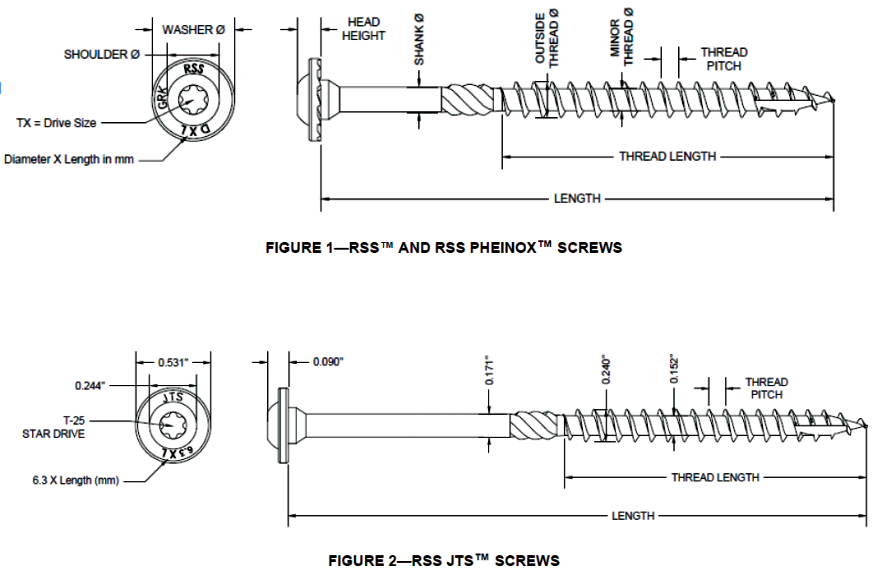
Structural fasteners get tested, resulting in documentation like this diagram from an Evaluation Report conducted by ICC-ES for GRK Fasteners.
Installation Requirements
There isn’t a huge different in installation methods with a structural fastener. Albany County Fasteners told us that “proper installation is essential. Structural fasteners require tighter tolerances, specific torque or tension values and use with appropriately rated materials.”
Typical head styles include hex, square, flange, and carriage bolts. Each serves specific structural fastening needs. Testing involves axial tension and/or shear force analysis to validate strength and performance claims.
“Speed and convenience for the builder is at the heart of structural screws,” Katsma said. “Generally, it installs like a ‘normal’ screw, but be aware that structural screw manufacturers may have specific requirements to be followed. SPAX PowerLags do not require pre-drilling for 1/4” and 5/16”, and require 40% less torque than traditional lags due to our patented thread serrations which can mean longer battery life for the power tools being used to install the structural fasteners.”
Katsma said that broadly speaking, there are three main head types: hex, flush, and cylindric. “Hex heads are the traditional style and offer a great accented look,” he said. “The flush heads, such as flat/pancake, countersunk, or washer heads, are favored for their flexibility, and torx/star drive, which reduces stripping.”
Giese said BECK structural fasteners are meant to be shot through a pneumatic nailer or stapler. Giese said the testing allows for a builder to use real math when determining how much of the product to use, giving “assurance of quality and performance perspective” because you can “properly calculate loads, number of fasteners per connection, etc.”
When Are They Necessary?
How does a builder know when a structural fastener needs to be used? Some kind of paperwork – a plan, or a design, or a drawing, or a manual – needs to tell you that. “If a design calls out a specific structural fastener, it is based upon the strength and performance of the structural fastener from testing and a generic lag screw should not be used,” Katsma said. “When there isn’t a design being followed, it is up to the contractor to know those limitations and if a structural fastener can overcome the issue.”
It’s not a difficult decision to make, even when it’s a forced one. There’s a reason they’re required.
“They are also usually stronger, tougher, and more durable because of proprietary treatments and coatings,” Katsma said. “Contractors can use less screws, install them faster, and have less headaches from complications.” RB

